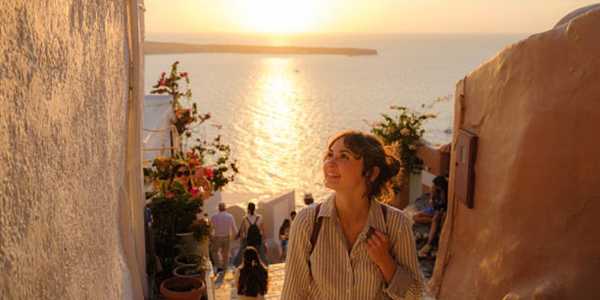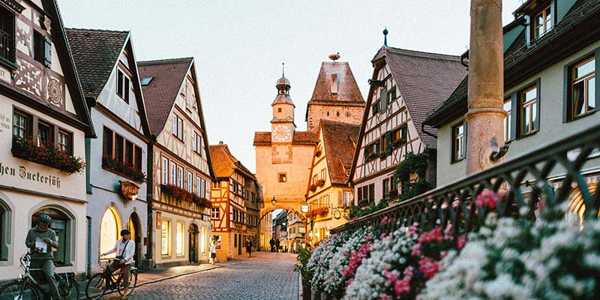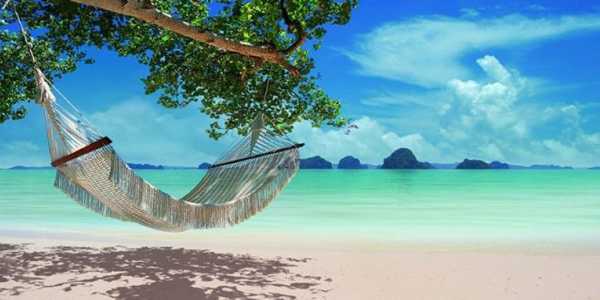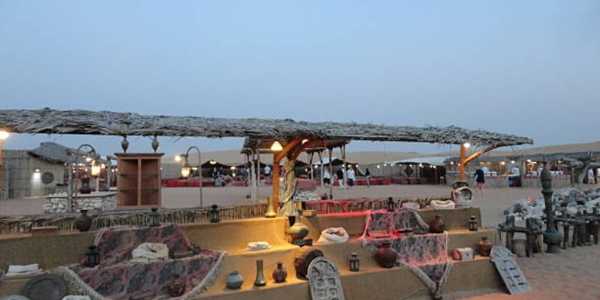Top 23 Mountain Destinations For Adventure Seekers
Ever wonder why some trips change you—and others just fill your camera roll? The answer often lives above the tree line. This guide explores mountain travel destinations, providing practical details such as seasons, terrain, access, safety, culture, and how to select challenges that feel well-earned.
How To Use This Guide (And Why It’s Different)?
You won’t find day-by-day plans here. Instead, you’ll get what actually helps once boots hit dirt: how weather behaves on specific ranges, where altitude starts to bite, what permits catch people out, the tradeoffs between huts and tents, and how to avoid the two worst outcomes—injury and a trip that’s too easy for your goals.
The Himalayas: Immense Scale, Surprising Access
Nothing prepares you for the Himalayas’ sense of space—villages perched above roaring rivers, trails braided with prayer flags, and sky so close you feel it. Go for the size; return for the culture.
Nepal (Everest Region and Annapurna)
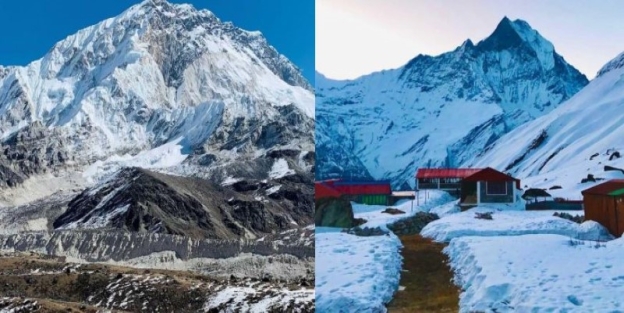
Terrain & Altitude
Expect long, steady climbs on well-worn paths, stone steps through rhododendrons and pine, and airy traverses above 4,000 m (13,000 ft). True "alpine" conditions typically begin late in the season and above 5,000 m.
Season
Pre-monsoon (Mar–May) means clear mornings, cloudier afternoons, and abundant wildflowers. Post-monsoon (Sept–Nov) brings drier air, colder nights, and the crispest views. Winter is dry and very cold; the summer monsoon limits visibility and stability.
Access
Most treks fly through Kathmandu. The Lukla airstrip services Everest-side access; Annapurna is centered on Pokhara (road or flight). Factor in buffer days—weather delays are common.
Permits & Logistics
TIMS/park permits are straightforward but must be purchased and carried with you. Teahouse networks are dense; pack a light bag and budget for meals, boiled water, and power. Going independently is realistic; guided options help with altitude pacing and logistics.
Hazards
Altitude illness (start ascending above ~2,500 m with discipline), dehydration, sun exposure, and nighttime cold. Ice on shaded steps surprises many in late fall. Mules and yaks have the right of way.
Who It Fits
Anyone wanting adventure mountain trips that marry cultural immersion with big terrain—and who can hike 6–9 hours with sustained elevation gain. If you prefer comfort, this is one of the few great ranges where you can sleep in a warm room most nights.
Keyword Note
For many travelers, Nepal is a top hiking destination, thanks to its world-class scenery and lack of technical climbing.
Bhutan (High, Remote, Restrained)
Terrain & Rhythm
Bhutan's high routes cross windswept passes, alpine meadows, and remote yak pastures. Trails are less trodden; the weather can be fierce. The country limits tourist numbers, protecting both culture and trails.
Season & Access
October–November is the clearest window; spring (April–May) is beautiful but wetter. Fly into Paro; all treks are guided by regulation. Pack light but warm—temperatures swing.
Good To Know
Etiquette matters. Dress modestly in towns and monasteries, learn a few greetings, and accept that pace is part of the experience. The remoteness makes it one of the most compelling mountain travel destinations for travelers who value solitude and tranquility.
Indian Himalaya (Ladakh, Himachal, Uttarakhand)
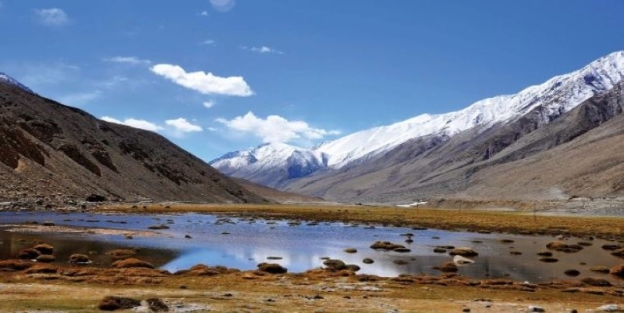
High, dry Ladakh feels like Tibet without the bureaucracy: lunar valleys, buttery light, and ancient gompas. Himachal and Uttarakhand blend oak-deodar forests with glaciated basins.
When To Go
Ladakh summers (Jun–Sept) are ideal; winter is brutal, and roads close. The central Himalayan shoulder seasons mirror those of Nepal.
Why Pick It?
Fewer crowds and plenty of altitude make this a quieter home for adventure mountain trips that still feel raw and spacious.
The Andes: A Spine of Stone from Tropics to Tierra del Fuego
The Andes are a sampler plate for every mountain mood—volcanic cones, granite cathedrals, condors, and campsites where the Milky Way rips the night in half.
Patagonia (Chile & Argentina)
Landscape
Glacier-fed lakes are the color of oxidized copper. Granite towers. Weather systems that sprint. Trails are mostly well-cut, with some braided sections, and boggy in shoulder seasons; they are also windy year-round.
Season
Nov–Mar is prime; shoulder months are calmer but moody. Expect four seasons in a day—pack a real shell and a windproof midlayer, not just “water-resistant” fabrics.
Access & Overnights
Chile's Torres del Paine utilizes a mix of wild camps and serviced camp-refugios, while El Chaltén (Argentina) anchors day hikes and multi-night loops beneath Fitz Roy and Cerro Torre. Book camps/refugios at least a month in advance during peak season.
Hazards
Wind is strong enough to knock you over, sudden temperature drops, and river crossings that require judgment. No altitude issues; weather is the challenge.
Why It Belongs Among The Top Hiking Destinations?
The drama-to-effort ratio is outrageous. You’ll earn views, but trails are logical, signage is decent, and logistics are solvable.
Cordillera Blanca & Huayhuash (Peru)
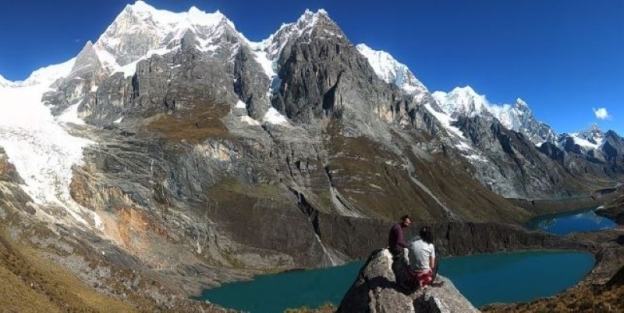
Altitude & Terrain
The Blanca holds some of the highest trekking trails on the continent. Turquoise lagoons, knife-edge ridges, and drooping seracs define the skyline. The Huayhuash is wilder and higher still.
Season
Dry season May–Sept. Nights freeze; days scorch. Start slow—first nights above 4,000 m require humility, hydration, and steady pacing.
Access
Lima flight, bus to Huaraz. Outfitters abound for renting high-altitude tents, stoves, and hiring burros/arriero support.
Safety & Culture
Petty theft is a concern; camp with others in designated areas. Rural communities are welcoming when respected. Ask before photographing people or homes. This corner is a crown jewel for mountain travel destinations that still retain a sense of authenticity.
Ecuador & Bolivia (Volcanoes And The Cordillera Real)
Ecuador condenses cloud forest, páramo, and snowfields into compact driving distances; Bolivia's Cordillera Real drops glacial bowls into deep, high valleys. Both reward fitness, layering, and a willingness to reroute due to adverse weather conditions.
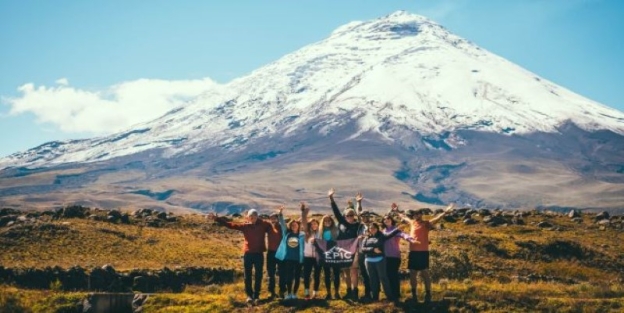
Pro tip. In both countries, acclimate to lower volcanic day hikes before tackling higher ridges. These are not "quick wins" unless your sea-level lungs are honest about their limits.
The Alps: Accessible Grandeur, Precision Logistics
The Alps are where mountain dreams become practical plans: trails stitched to huts, towns tied to cable cars, and an espresso never too far away.
France/Italy/Switzerland (Mont Blanc And Beyond)
Terrain
Sculpted switchbacks, balcony paths clinging to grassy slopes, ladders where terrain demands it. Glaciers in view, cows with bells in earshot. Elevation gain is real but well distributed.
Season
Mid-June to mid-Sept is hut season. Early summer can hold snow; late summer brings the cleanest trails.
Huts & Culture
/Refuges/berghütten range from rustic to boutique. You sleep in bunks, eat communal dinners, and wake early. Bring a sleep sheet and earplugs. Booking is essential.
Hazards
Afternoon thunderstorms, lingering névé on north-facing slopes, and heat waves in valleys. Navigation is excellent; weather can still be humbling.
Why It’s On Every List Of Top Hiking Destinations?
You can stack huge scenery with civilized recovery—ideal for pushing daily vertical without carrying expedition weight.
Dolomites (Italy)
Distinctives
Razor limestone towers, WWI history etched into trails, and via ferrata—cabled routes that blend hiking and easy climbing. Perfect if you crave a little exposure without full climbing systems.
Gear & Respect
Helmet, proper ferrata lanyard, and comfort with heights. Storms turn rock greasy in minutes—retreat early.
Swiss Bernese Oberland & Valais
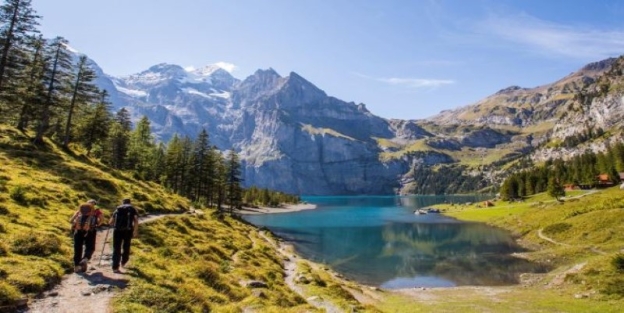
Think Eiger-Mönch-Jungfrau castles and the Matterhorn's perfect pyramid. Trails flow between car-free villages. The cost of living is high; trail quality is even higher.
Good To Know
Cableways can save your knees, but they come at a cost; be sure to build that into your plan. The Alps embody efficient adventure mountain trips: big days, hot meals, warm bunks.
North America: From Wild To Wildly Convenient
It’s a continent of contrasts: hut-to-hut in the White Mountains, deep wilderness in Alaska, turquoise lakes beneath serrated Canadian spines.
Canadian Rockies (Banff/Jasper/Yoho/Kootenay)
Look & Feel
Glacial till lakes in shocking blues, larch forests turning gold in September, and grizzlies you want to admire from a distance. Trails switch between cruiser valley miles and steep moraine pulls.
Season
Late June through Sept. Snow hangs late on passes; smoke from wildfires can alter skies and lungs—carry a buff and know your air-quality limits.
Logistics
Trailhead parking fills by dawn. Shuttle systems are available for popular areas; book one. Bear canisters or approved storage are required in many zones.
Why It Ranks Among Top Hiking Destinations?
Sheer density of “wow” per mile, plus a developed park system that rewards planning.
Alaska (Denali & Beyond)
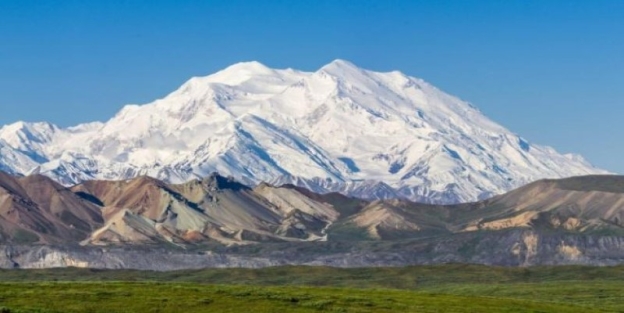
Commitment
Denali’s backcountry is off-trail, permit-zoned, and real wilderness. You’ll ford rivers, navigate tussocky tundra, and glass for wildlife. Fewer people, bigger stakes.
Season
Short: late June–early Sept. Mosquitoes rule early; cold snaps can arrive any time. Bring real insulation—and humility.
Safety
Bear awareness is mandatory: follow food storage discipline, hike quietly in brush, and carry bear spray on your hip, not in your pack. Alaska redefines adventure mountain trips as self-reliance first, photos second.
Colorado Fourteeners & Sierra Nevada (U.S.)
Colorado
50+ peaks above 14,000 ft, some hikeable, others scrambly. Start before sunrise and descend before thunderstorms strike the ridgelines. Acclimate; these are deceptively high.
Sierra Nevada
Granite slabs, high passes, bear canisters, and unforgettable basins. Snow lingers into July in some years. A masterclass in classic American alpine—big days, clean lines, cold lakes.
Africa: Peaks Above The Plains, Mystery In The Mists
Kilimanjaro (Tanzania)
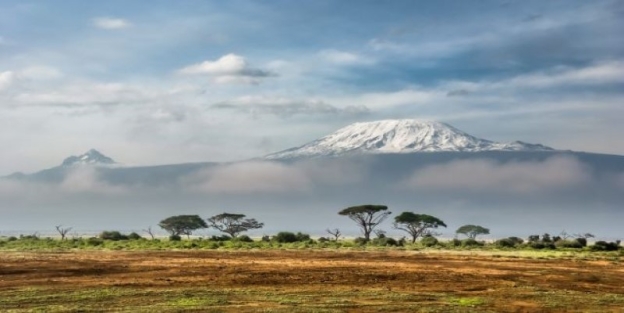
Why attempt it? No technical climbing, but significant altitude. Ecosystems swap like chapters: rainforest, heather, moorland, alpine desert, a summit crater dusted with ice.
Season. There are two main dry seasons: January to March and June to October. Choose operators who treat porters fairly and build conservative pacing days.
Hazards. Rapid gains without acclimatization are the most common point of failure. Eat, drink, and move slowly—this is an altitude hike that deserves patience among mountain travel destinations.
Rwenzori Mountains (Uganda)
Mood. Boggy, mystical, and lush, with equatorial glaciers clinging to black rock. Wooden boardwalks cross peat; giant lobelias and groundsels make you feel small and lucky.
Season. Drier windows from December to February and June to August, but "dry" is relative here. Waterproof socks and real gaiters make morale. Guides are required; embrace their expertise.
Atlas Mountains (Morocco)
Access. Quick hops from Marrakesh to trailheads, with mule support common. Jebel Toubkal offers altitude without remoteness; Berber hospitality warms cold nights.
Shoulder-season treat. Spring and fall blend clear skies with comfortable temps. Summer is hot; winter ascents need ice axes and experienced decisions.
Oceania & East Asia: Range Hopping In Weather-Making Islands
New Zealand Southern Alps
Personality. Braided rivers, swing bridges, beech forest, tussock above. Weather turns on a coin; tracks vary from perfectly benched to “is this even a trail?”
Season. Nov–Apr is the main season. Huts are cultural institutions—book popular ones well in advance. Bring true rain gear, a pack liner, and tolerance for wet feet.
Why it belongs among the top hiking destinations, the density of landscapes in a small footprint keeps the scenery-to-effort ratio high, and the DOC system is a model for trail stewardship.
Japanese Alps
What's special? Serrated ridges, airy ladders, and mountain huts with onsen-adjacent recovery in valleys below. Summer is the peak season; autumn colors are outrageous.
Cultural grace. Bow to hut staff, keep voices low, and savor meticulous trail maintenance. Food is a highlight; pack lighter to enjoy hut dinners.
Central Asia & The Caucasus: Big Quiet, Big Sky
Pamir & Tian Shan
Scale. Glaciated plateaus, turquoise tarns, and minimalist infrastructure. Kyrgyz jailoos (summer pastures) add a human rhythm to the vast geology.
Season. Short—July/August prime, shoulder months possible. Logistics are real: 4x4 approaches, river crossings, and self-sufficiency. Perfect for adventure mountain trips that prioritize solitude.
Georgian Caucasus (Svaneti & Kazbegi)
Why go. Towers of stone in medieval villages, peaks that flex like the Alps without the density. Trails are improving; the weather feels alpine, with quick storms and quick clears.
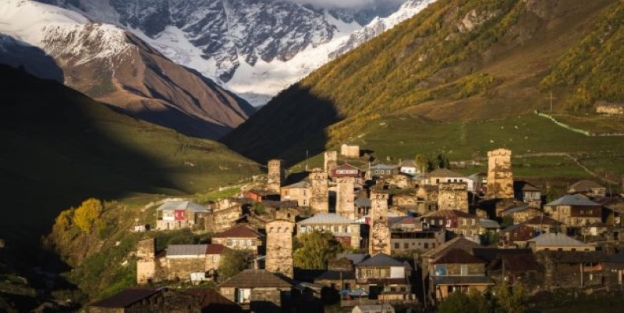
Access. Tbilisi to Mestia by flight or long road. Summer brings flowers and firm paths; autumn brings color and clarity.
Safety, Health, And Decision-Making At Altitude
Altitude Doesn’t Negotiate
Learn the signs (headache, nausea, dizziness, insomnia); respond early. The basic formula: climb high, sleep lower; gain no more than 300–500 m sleeping altitude per day once above ~2,500 m; add a rest day every three or four. Hydration matters; sodium matters; ego does not. This is true across the world's mountain travel destinations, regardless of how easy the photo makes them appear.
Weather Is Next
Mountains make their own—katabatic evening winds, convective afternoon storms, and temperature drops the moment you cross a ridge. Check forecasts before you lose signal, then plan your day to avoid exposed passes before storms. If skies build, you can always turn back; summits don't move.
Wildlife Is Third
Know where bears live (Canada, Alaska, parts of the U.S. West), where cows block the path (Alps), and where yaks don't negotiate (Nepal). Store food properly. Make noise in the blind brush. Carry spray where appropriate; carry respect everywhere.
Finally navigation. Even on famous top hiking destinations, fog wipes out wayfinding. Carry a paper map and a compass you know how to use. Phones fail in cold, wet, and low-battery battery. Redundancy is safety, not weight.
Gear That Pulls Its Weight—By Region And Range
You don’t need the most expensive kit; you need the right kit for the right mountains.
Shells
True waterproof-breathable jacket and pants (Patagonia H2No, eVent, Gore-Tex). In Patagonia, New Zealand, and the Japanese Alps, this isn't optional.
Insulation
A light fleece midlayer, paired with a real puffy (down or synthetic), works nearly everywhere. In the Himalayas and Cordillera Blanca, nights demand a warmer belay-weight jacket—even in tea-house culture.
Footwear
Trail shoes are enough on the Alps and well-trodden Nepal routes if you’re confident; mid-boots help with scree, bogs, and pack weight. In the Rwenzoris, waterproof boots and knee-length gaiters pay for themselves by breakfast.
Sleep System
If you're using huts/teahouses, a liner or light bag is fine (ask about blankets). Tent-based Andean or Alaska trips require a 3–4 season bag and a high R-value pad.
Sun & Water
Glacier glare burns fast. Bring glacier-rated sunglasses for places like the Andes. Filter, boil, or treat water; carry a soft bottle for hot drinks at high camps.
Trekking Poles
Save knees on long downhills (Alps, Rockies), stabilize in bogs (Rwenzori, NZ), and help with stream crossings (Patagonia, Sierra). They’re not just for grandma.
Culture, Permits, And Travel Etiquette That Keep Doors Open
Mountains Are Home Treat them—and their people—accordingly.
Permits
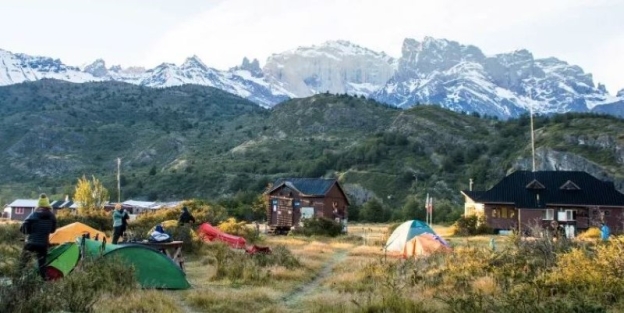
Some parks cap the number of visitors (Torres del Paine campsites, certain areas in Nepal, and U.S. quota trails). Buy legit permits and keep them handy; rangers and wardens are there to protect, not to hassle.
Guides
In places like Bhutan and Rwenzori, they're mandatory; on Kilimanjaro, they're standard; in Alaska, they're wise unless you're an expert. A good guide isn't a luxury—it's local knowledge, risk management, language, and culture.
Etiquette
Ask before photos. Dress modestly near monasteries and in conservative villages. In huts, quiet hours are real. In teahouses, order where you sleep—those kitchens keep you warm.
Leave No Trace
Pack out microtrash. Poop rules vary by place (cat holes vs. wag bags vs. huts). Follow local guidance; the ground is not your trash can.
This is how popular mountain travel destinations stay special, and how lesser-traveled valleys welcome the next hiker after you.
Picking The Right Difficulty: Honest Self-Assessment Beats Heroics
Match terrain to your current engine, not your fantasy. Elevation gain and altitude multiply effort. A 15 km day with 1,000 m climb in the Alps on a good track is not the same as 15 km in Alaska's tussock or the Rwenzori's mud. Ask: How many hours can I comfortably move with a pack? How do I handle exposure? Do I enjoy river fords or dread them? Your best adventure mountain trips live where ambition and ability overlap—with a small buffer for the unexpected.
If you're training for a specific event, build specificity by incorporating exercises such as stair repeats with a pack, long weekend climbs, back-to-back days to simulate fatigue, and downhill tolerance (most injuries occur on the way down). Learn foot care before blisters teach you a lesson.
Budget Reality Check (And Where To Put Your Money)
- Alps & Japan: Huts and food are pricey, but you save on guide costs and logistics.
- Patagonia & NZ: Moderate trip costs, with transport and food spikes in remote towns.
- Nepal & Peru: Exceptional value on trail, with flights as the major upfront cost.
- Bhutan & Kilimanjaro: Guiding and permits dominate costs; choose ethical operators.
- Alaska: Logistics, gear, and time buffers cost real money; the wild is worth it.
Spend on footwear that fits, a real shell, and sleep you can trust. Save by renting specialty items in Huaraz, Chamonix, or El Chaltén; buying used layers at home; and choosing shoulder seasons. Insurance that covers evacuation isn’t optional—especially in places where “hospital” isn’t a short ride away.
Environmental Change: What You’ll Notice On The Ground
The glaciers you saw in a friend's 2010 photo might have retreated by 2025. Shoulder seasons stretch; wildfire smoke becomes a planning factor; storms carry more water. Build flexibility: consider alternate low-route options, use smoke masks for sensitive lungs, schedule backup days, and be willing to say "not this time" when river levels, winds, or heat conditions dictate otherwise. Among the world's top hiking destinations, the best travelers are observers first and bag-tickers second.
Solo Vs. Partner Vs. Guided: Choosing How You Want To Learn
Solo magnifies awareness; partners multiply joy (and redundancy); guides compress local knowledge into safety and access. If your risk domain is low (Such as Alpine huts in the Alps or Nepalese teahouses), solo travel can be deeply rewarding.
If your domain is complex (Alaska off-trail, Andean high circuits), a partner or guide converts unknowns into time on trail. There's no singularly "brave" option—only the one that best matches the trip's complexity and your experience.
Five Common Mistakes (And How To Avoid Them)
- Underestimating altitude. “It’s only hiking” fails at 4,500 m. Slow down, drink, and add a buffer night.
- Overpacking “just in case.” Heavy packs create knee and foot problems. Fine-tune. If you didn’t use it all week at home training, reconsider.
- Ignoring the sun and wind. Glacier glare, katabatic winds, and lip-splitting dryness are real. Sunscreen, balm, glacier glasses, wind layers.
- Treating huts like hotels. They are mountain refuges. Bring cash, a liner, good manners, and manage expectations.
- Faking fitness. Fitness is earned before the flight, not after the first pass. Protect your future self.
These apply whether you’re headed to famous top hiking destinations or an unknown valley on your map.
Photography Without Ruining The Moment
Shoot early and late. Midday contrast kills texture. Keep cameras in chest pouches to actually use them. But remember: the memory isn’t the JPEG. When ridges glow and your lungs hurt and the tea is almost painfully hot, let the picture be the one your body keeps.
Where Ambition Meets Place: Matching Goals To Ranges
- Want comfort + views? The Alps, Japan’s huts, Nepal’s teahouses.
- Want weather drama without altitude? Patagonia, New Zealand.
- Want altitude with infrastructure? Nepal, Peru (Blanca side).
- Want remoteness + learning? Alaska, Pamir, Rwenzori, Cordillera Real.
- Want a first “big” summit day with support? Kilimanjaro, Colorado 14ers (with caution), Toubkal in fair conditions.
The “best” mountain travel destinations aren’t universal; they’re personal. The best choice is the one you’ll finish proud, not punished.
Travel Light, Travel Kind
Pack a small repair kit (tenacious tape, needle, cord), a compact first-aid setup you actually know how to use, electrolyte tabs for hot, sweaty days, and a willingness to adjust your plan. Greet people on the trail. Learn "hello" and "thank you" in local languages. Pick up microtrash that isn't yours. Mountains remember who passes through; leave a story they'll want to keep.
Choose Your Next High-Country Goal
If your gut surged at the thought of wind ripping a tent in Patagonia, book it. If tea houses and prayer wheels sounded like your pace, pick Nepal. If huts, cheese, and big days felt right, the Alps are calling. The point isn’t to “collect” adventure mountain trips; it’s to find the places that reflect who you are when you’re most alive. Among the world’s truly great mountain travel destinations, the best path is the one that humbles you just enough to come back stronger—and the best of the top hiking destinations will be waiting when you do.
Was this helpful? Share your thoughts
- Learned practical methods
- Solved my questions
- Inspired new ideas
-
![Best Cheap All-Inclusive Vacation Packages That Feel Luxurious]() Best Cheap All-Inclusive Vacation Packages That Feel Luxurious
Best Cheap All-Inclusive Vacation Packages That Feel Luxurious -
Imagine scrolling through travel sites, dreaming of white-sand beaches and gourmet meals, only to close the tab when prices skyrocket. Many assume luxury means emptying savings accounts, but savvy travellers know better. Cheap all-inclusive vacation packages can deliver upscale experiences without the hefty tags. This guide explores how to find these gems, highlighting destinations, tips, and real examples that make budget trips feel indulgent.
Explore More
-
![6 Best Ticket Apps And Websites For Booking Attractions]() 6 Best Ticket Apps And Websites For Booking Attractions
6 Best Ticket Apps And Websites For Booking Attractions -
Travellers often face long lines and high prices at popular sites, but thoughtful planning changes everything. Picture skipping queues at the Eiffel Tower or scoring deals on theme park entry – that reality starts with the right tools. This guide explores the top ticket booking apps and websites for attractions, explaining why online options surpass traditional methods. With trusted platforms, users secure convenience and savings effortlessly.
Explore More
